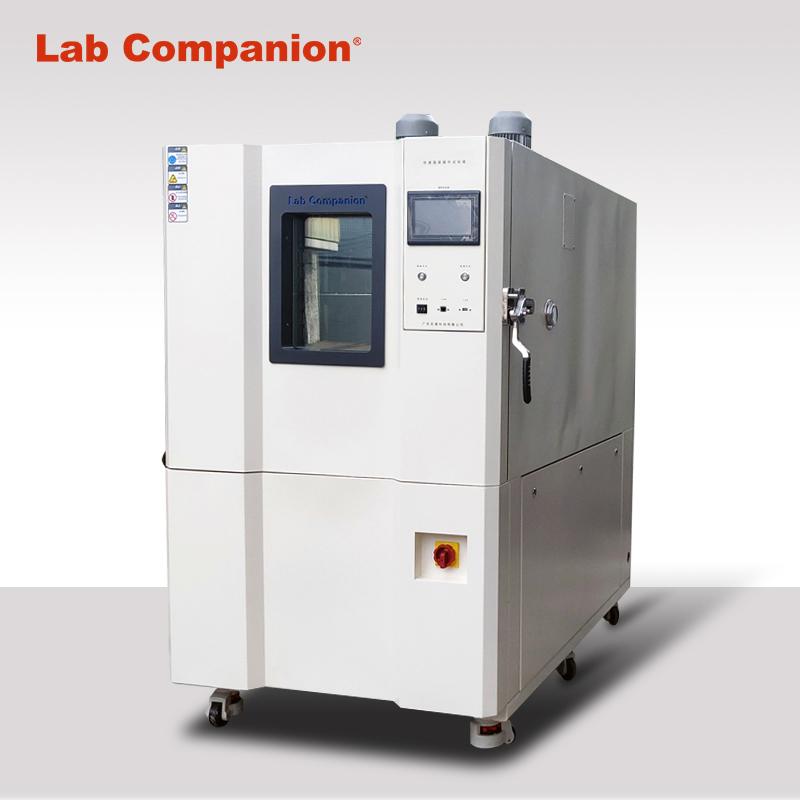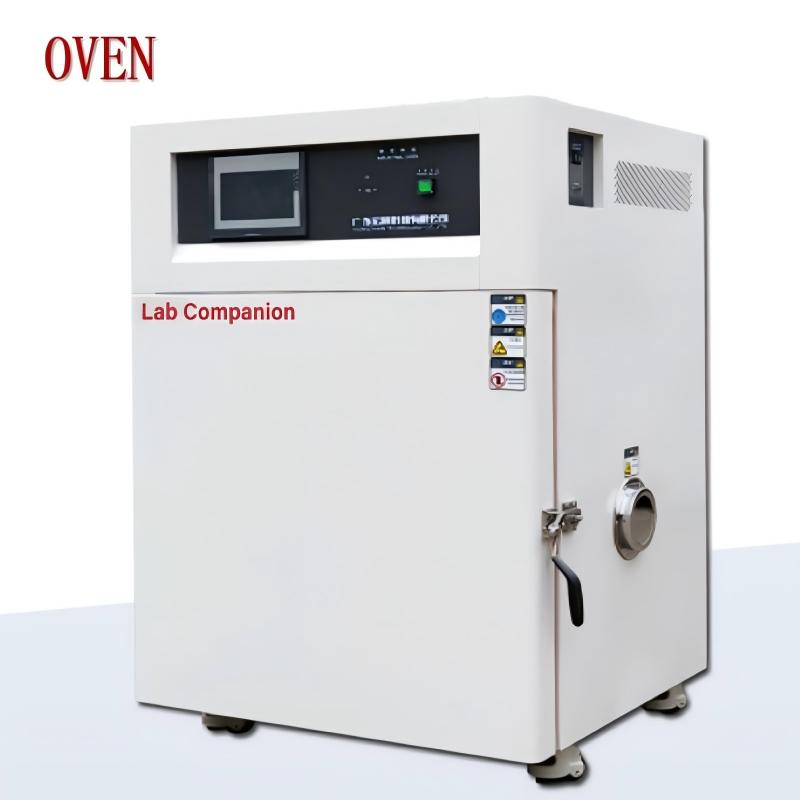Email Us :
info@lab-companion.com labcompanionltd@gmail.com-

-

Requesting a Call :
+86 18688888286


Requesting a Call :
+86 18688888286

We offer temperature control designs for a wide range of applications
Battery packs integrate multiple cells with a BMS and thermal controls for stable power. Key uses include EVs, energy storage, electronics, drones, and medical devices. Examples: Tesla’s 4680 and BYD’s Blade Battery. The temperature and humidity testing of battery packs is a critical evaluation of their performance and reliability under varying thermal and hygrometric conditions. To simulate real-world operating environments, battery packs must undergo comprehensive testing across diverse conditions, including low temperature with low humidity (LT/LH), low temperature with high humidity (LT/HH), and high temperature with high humidity (HT/HH). Based on actual case studies, this paper analyzes the technical requirements that a constant temperature and humidity test chamber must fulfill to conduct these assessments effectively. Key Technical Requirements for Test Chambers: Temperature Range: Capable of achieving extreme conditions (e.g., -40°C to +85°C) with high stability (±0.5°C). Humidity Range: Adjustable from 10% to 98% RH, ensuring precision (±2% RH). Ramp Rates: Controllable temperature/humidity transition speeds (e.g., ≥1°C/min) to simulate rapid environmental changes. Uniformity: Maintain consistent temperature (±1°C) and humidity (±3% RH) distribution within the workspace. Data Logging: Real-time monitoring and recording of test parameters for compliance with standards (e.g., ISO 16750, GB/T 31467). Safety Features: Explosion-proof design, leak detection, and emergency shutdown protocols for hazardous scenarios. Battery Pack Environmental Testing Conditions 1. Temperature Testing High-Temperature Testing: Simulates vehicle operation or storage in hot climates. Test temperatures typically range from 45°C to 70°C, depending on standards (e.g., ISO, GB, or customer specifications). Test items include: High-temperature storage High-temperature cycling High-temperature discharge Low-Temperature Testing: Simulates vehicle operation or storage in cold climates. Test temperatures typically range from -40°C to -20°C, depending on standards. Test items include: Low-temperature storage Low-temperature startup Low-temperature cycling Low-temperature discharge Thermal Shock Testing: Simulates rapid temperature fluctuations (e.g., -40°C ↔ 70°C) to evaluate the battery pack’s resistance to extreme thermal stress. Thermal Runaway Testing: Simulates internal/external short circuits to assess the effectiveness of the battery pack’s thermal management and safety mechanisms, preventing explosions or fires. 2. Humidity Testing Damp Heat Cycling Test: Simulates high-temperature, high-humidity environments (e.g., 40°C / 95% RH) to evaluate corrosion resistance and sealing performance. 3. Salt Spray Testing Salt Fog Corrosion Test: Simulates high-salinity coastal environments to verify the battery pack’s corrosion resistance. 4. Waterproof Testing Water Ingress Test: Simulates water exposure (e.g., immersion, rain) to validate waterproofing performance (evaluated by IP protection rating). 5. Dustproof Testing Dust Ingress Test: Simulates high-dust environments (e.g., deserts) to verify sealing integrity. 6. Low-Pressure Testing Altitude Simulation Test: Simulates atmospheric pressure changes at different elevations to assess battery pack adaptability. Technical Specifications for Constant Temperature & Humidity Test Chamber (Compliant with customer requirements) Chamber Dimensions Internal dimensions (W×D×H): 3000 × 2000 × 2000 mm Functional Requirements 1.Temperature Range: -60°C to +150°C 2.Heating Rate: ≥1°C/min (average, under load: 1T, 5kW heat output) from -40°C to +125°C 3.Cooling Rate: ≥1°C/min (average, under load: 1T, 5kW heat output) from +125°C to -40°C 4.Temperature Resolution: 0.01°C 5.emperature Fluctuation: ≤±0.2°C (no load) 6.Temperature Deviation: ≤±2°C 7.Temperature Uniformity: ≤2°C (no load) 8.Continuous Low-Temperature Operation: 1000 hours at low temperature without frost/icing (requires dry air system) 9.Humidity Resolution: 0.1% RH 10.Humidity Fluctuation: ≤±2.5% RH 11.Humidity Deviation: ≤+3% RH (when >75% RH) ≤±5% RH (when <75% RH) 12.Extended Operation Capability: Low-temperature & low-humidity: 240 hours High-temperature & low-humidity: 240 hours Key Enhancements & Scientific Rigor 1.Standard References: Added implicit compliance with ISO, GB, and IP standards for credibility. 2.Precision Metrics: Specified resolution, uniformity, and deviation to meet engineering demands. 3.Safety & Reliability: Highlighted frost prevention (dry air system) and long-duration testing capability. 4.Clarity & Structure: Organized into logical sections for readability while maintaining technical accuracy. To meet the rigorous demands of battery pack environmental testing, our advanced constant temperature and humidity test chambers are engineered to deliver precision, reliability, and compliance with global standards. Why Choose Our Environmental Test Chambers? ✅ Wide Temperature Range: -70°C to +150°C for comprehensive high/low-temperature testing, including thermal shock. ✅ Rapid Temperature Transition: ≥1°C/min heating/cooling rates under load (1T, 5kW heat output). ✅ High Humidity Precision: 10%–98% RH with ±2.5% RH fluctuation and 0.1% resolution for accurate damp heat cycling. ✅ Stable Long-Duration Operation: 1000+ hours at extreme low temps (anti-frost dry air system included). 240+ hours in low-humidity conditions (both high & low temp). ✅ Uniformity & Accuracy: ≤±0.2°C temp fluctuation (no load) ≤2°C spatial uniformity. ✅ Large Testing Capacity: 3000×2000×2000mm (W×D×H) internal workspace of Walk-in Climate Test Chamber for full-scale battery pack evaluations. ✅ Safety & Durability: Designed for thermal runaway prevention, salt fog, waterproof (IP-rated), and dustproof testing.
Based on new technologies and new materials, we will modernize the development and utilization of traditional renewable energy. We will replace fossil energy with renewable energy that has limited resources and pollutes the environment. Among them, solar energy, wind energy, biomass energy, tidal energy, geothermal energy, hydrogen energy and nuclear energy are the key development energy determined by the United Nations. The collectors and converters of new energy often need to be placed in the outdoor environment, so the detection of these equipment materials and design is an important part.
Semiconductor products are often used in high-end electronic equipment, such as medical devices and communication equipment, so its quality and reliability can not be ignored, reliability testing is through a series of experiments and analytical means to evaluate the reliability,stability and life of semiconductor devices under specific conditions, is an important means to ensure product quality and stability, and also the basis of customer trust and satisfaction. Therefore, the establishment of scientific and rigorous semiconductor reliability test standards is crucial to the development of the semiconductor industry.
With the vigorous development of the world aviation industry, the environmental test of aviation airborne products, as an important part of airworthiness compliance verification, has been paid more and more attention. It has become a necessary test project for airworthiness certification of aviation airborne products at all levels, as well as an important means of product quality control in the aviation industry, which effectively improves the reliability and safety of aviation equipment.
Click to view the latest company information
On November 22, Qin Xiemin, Secretary of Tongdao County Party Committee, led a delegation to GuangDong Lab Companion, a Tongdao-native founded enterprise in Dongguan, Guangdong. The delegation included Yu Huachang (Standing Committee Member of County Party Committee & Deputy County Mayor), Cao Chuanxin (Standing Committee Member of County Party Committee & Director of County Party Committee Office), and Zhang Yunping (Member of Party Leadership Group & Deputy County Mayor of County People's Government). The visit aimed to inspect the enterprise's development, listen to the voices of fellow villagers, and promote in-depth government-enterprise cooperation for mutual growth. Accompanied by Xue Zeming, General Manager of GuangDong Lab Companion, the delegation visited the company's production workshops and R&D centers, observing the production processes and assembly techniques of core products such as high-low temperature alternating humidity test chambers and constant temperature and humidity test chambers. During the subsequent seminar, Qin inquired about the enterprise's progress in technological R&D, market expansion, and production capacity layout, with a focus on its cooperation achievements in aerospace, electronic communication, and automobile manufacturing in recent years. Xue introduced that since its establishment in 2005, the company has grown into a high-tech enterprise with multiple patents. Its products are recognized by renowned clients including Huawei, Xiaomi, and National University of Defense Technology, and it is now expanding into new business areas such as specialized equipment manufacturing for integrated circuit chips and semiconductor devices. He elaborated on the company's advantages, market positioning, the current status and trends of the ultra-low temperature testing equipment industry, as well as its future development plans and strategic layout. In his closing remarks, Qin highly affirmed GuangDong Lab Companion's achievements in the environmental test equipment sector and encouraged the enterprise to leverage its technological and resource advantages. Xue expressed sincere gratitude to the Tongdao County Party Committee and Government for the special visit, stating that with strong support from all parties, the company will make steadier strides in the high-low temperature testing equipment industry and contribute more to industrial upgrading and economic development.
Learn MoreGuangdong Lab Companion Ltd., located in Dongguan, Guangdong, has been awarded a utility model patent for a "UV Aging Test Chamber" by China's State Intellectual Property Office, with the patent number ZL 2024 2 2347890.5. This specialized test chamber is designed to simulate UV exposure conditions, enabling accelerated aging tests for materials like plastics, coatings, and textiles. Such capabilities help manufacturers evaluate product durability and lifespan efficiently, ensuring compliance with industry standards. For Lab Companion Technology, the patent strengthens its technical edge in environmental testing equipment. It enhances the company's competitiveness in both domestic and international markets, potentially attracting partnerships with industries reliant on material reliability testing. The intellectual property protection also paves the way for further R&D in related fields, supporting long-term growth strategies.
Learn MoreDear Customers, Partners, and Friends from All Sectors of Society, With your long-term trust and support, Lab Companion (hereinafter referred to as "our company") has achieved steady development and continuous growth. To align with our strategic development plan, optimize the office and service environment, enhance core competitiveness, and better meet market demands and customer service expectations, our company has officially launched the new office address starting from October 1, 2025 after careful decision-making by the management and completion of relevant filing procedures. Relevant matters are hereby notified as follows: I. Details of Address Change 1. New Office Address: No. 5, Lixin Junmin Road, Licheng Sub-district, Dongcheng Street, Dongguan City, Guangdong Province 2. Original Office Address: East Factory on the First Floor, Great Wall Juyi Building, Honghualing Area, Tutang Village, Changping Town, Dongguan City Starting from October 1, 2025, all official communications, business negotiations, document receiving and dispatching, and visitor reception will be uniformly conducted at the new address. The original address will no longer serve as our company's office and contact location. II. Key Information 1. Contact Information Remains Unchanged: During the address transition, our official website, contact number (+86 186 8888 8286), email address (info@labcompanion.cn), and business consultation hotline remain unchanged to ensure uninterrupted communication. 2. Seamless Business Operation: This address change only involves office location adjustment, without affecting the company's legal entity status, equity structure, business scope, or service commitments. All business operations, including contract execution, project delivery, and after-sales service, will proceed as scheduled with consistent service quality. III. Friendly Reminder If you plan to visit our company for business, please confirm with us in advance via the above contact methods to facilitate our reception arrangements. We sincerely apologize for any temporary inconvenience caused by this change. The new address marks an important milestone in our company's development and a new starting point for improving service quality. In the future, Lab Companion will continue to provide high-quality products and services with better facilities, more efficient management, and a more professional team, and work together with you for a brighter future. We sincerely appreciate your understanding, trust, and support, and look forward to continuing our cooperation at the new address. Hereby Notified. Lab Companion
Learn MoreGUANGDONG LAB COMPANION LTD has obtained international certification for its temperature and humidity test box, which will help expand the European market.We have successfully passed a series of international standard certification for its temperature and humidity test box series, which has laid a solid foundation for the product to enter the European market.This certification was carried out by the authoritative certification body ICR and the corresponding certification certificate (No: ICR/VC/HS2506119) was issued. GUANGDONG LAB COMPANION LTD is located in the first floor of the East Block of Great Wall Juyi Building, Honghua Ridge Section, Tutan Village, Changping Town, Dongguan City, Guangdong Province, China. We are committed to providing high quality laboratory equipment for customers all over the world.The series of temperature and humidity test boxes that have passed the certification this time includes C-27, C-64, C-100, C-150, C-225, C-270, C-408, C-608, C-800, C-1000 and T-27, T-64, T-100, T-150, T-225, T-270, T-408, T-608, T-800, T-1000 and other models, which are widely used in scientific research, industrial production and quality control.According to the certification report, this series of products are in line with the relevant EU standards in terms of mechanical safety (MD [2006/42/EC]), low voltage Directive (LVD [2014/35/EU]) and electromagnetic compatibility (EMC [2014/30/EU]). Specifically, it includes EN ISO 12100:2010, EN 60204-1:2018, EN IEC 61326-1:2021 and EN IEC 61326-2-1:2021 and other international specifications.The passing of this series of certification marks that the temperature and humidity test box of Guangdong Lab Companion LTD has reached the international advanced level in terms of safety, reliability and electromagnetic compatibility. We are honored to receive ICR certification, which not only recognizes our product quality and technical capabilities but also provides strong support for our expansion into the European market. A senior official from GUANGDONG LAB COMPANION LTD stated, "Moving forward, we will continue to uphold the principles of innovation, quality, and service, continuously enhancing our product performance and service quality to offer global customers superior laboratory solutions."We will take this certification as an opportunity to further increase investment in research and development and market expansion, and strive to become a global leader in laboratory equipment.
Learn MoreNo. 5,Junmin Road - Lixin - Dongcheng Subdistrict - Dongguan City - Guangdong Province - China
Signup our newsletter to get update information, promotion and insight.
